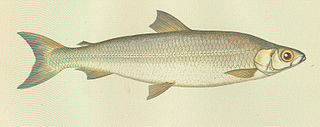
Limnology, is the study of inland aquatic ecosystems. The study of limnology includes aspects of the biological, chemical, physical, and geological characteristics and functions of inland waters. This includes the study of lakes, reservoirs, ponds, rivers, springs, streams, wetlands, and groundwater. A more recent sub-discipline of limnology, termed landscape limnology, studies, manages, and seeks to conserve these ecosystems using a landscape perspective, by explicitly examining connections between an aquatic ecosystem and its drainage basin. Recently, the need to understand global inland waters as part of the Earth System created a sub-discipline called global limnology. This approach considers processes in inland waters on a global scale, like the role of inland aquatic ecosystems in global biogeochemical cycles.

The European Mathematical Society (EMS) is a European organization dedicated to the development of mathematics in Europe. Its members are different mathematical societies in Europe, academic institutions and individual mathematicians. The current president is Volker Mehrmann, professor at the Institute for Mathematics at the Technical University of Berlin.
Hydrobiology is the science of life and life processes in water. Much of modern hydrobiology can be viewed as a sub-discipline of ecology but the sphere of hydrobiology includes taxonomy, economic biology, industrial biology, morphology, physiology etc. The one distinguishing aspect is that all relate to aquatic organisms. Much work is closely related to limnology and can be divided into lotic system ecology and lentic system ecology.

The pollan or Irish pollan is a freshwater whitefish known only from five Irish lakes, Lough Neagh, Lower Lough Erne, Lough Ree, Lough Derg, and Lough Allen. The Irish pollan faces competition from introduced species such as pike, roach, and zebra mussel and the populations rely on restocking for survival.
The profundal zone is a deep zone of an inland body of freestanding water, such as a lake or pond, located below the range of effective light penetration. This is typically below the thermocline, the vertical zone in the water through which temperature drops rapidly. The temperature difference may be large enough to hamper mixing with the littoral zone in some seasons which causes a decrease in oxygen concentrations. The profundal is often defined, as the deepest, vegetation-free, and muddy zone of the lacustrine benthal. The profundal zone is often part of the aphotic zone. Sediment in the profundal zone primarily comprises silt and mud.
A history journal is an academic serial publication designed to present new scholarship on a historical subject, usually a subfield of history, with articles generally being subjected to peer review.
Ankyra is a genus of green algae in the family Characiaceae. This genus of algae is closely related to Atractomorpha and Sphaeroplea.
Gunnar Nygaard was a Danish phycologist, and a leading authority on the ecology and taxonomy of Danish phytoplankton. Nygaard completed his Masters at University of Copenhagen, initially working at the Freshwater Biological Laboratory in Hillerød as a research stipendiary. From 1933 until his retirement in 1972 he was employed as a lecturer in the Danish grammar school system. Thereafter, he was provided an office at the Freshwater Biological Laboratory to facilitate his work. In recognition of his scientific contributions, the University of Copenhagen awarded him the degree dr. scient. honoris causa.

The International Mine Water Association (IMWA) is the first scientific-technical association worldwide dedicated to mine water related topics. Its peer-reviewed journal is Mine Water and the Environment.
Peter Flora is an Austrian citizen and taught until his retirement in spring 2009 as a professor of sociology at the University of Mannheim. Peter Flora is a son of the Austrian drawer, caricaturist, graphic artist and illustrator Paul Flora.

Lake Sausacocha is a lake in Peru, 10 kilometres (6.2 mi) to the northeast of Huamachuco in Huamachuco District, Sánchez Carrión Province. Literal meaning of Sausacocha is "lagoon that never dries." Overgrazed hillsides surround the lake and there are also Inca ruins nearby.
The International Association for the Philosophy of Law and Social Philosophy (IVR) is a learned society for science and was founded in 1909 as the "Internationale Vereinigung für Rechts- und Wirtschaftsphilosophie". It was renamed to "Internationale Vereinigung für Rechts- und Sozialphilosophie" in 1933. The IVR is the world's central academic organization for the study and advancement of legal and social philosophy.
The International Union for Theoretical and Applied Mechanics (IUTAM) is an affiliation of about 500 mechanicians in about 50 countries, and involving about 20 associated organizations, including the International Council for Science (ICSU). The proceedings of symposia organized by IUTAM are published as Procedia IUTAM.
The International Association of Applied Psychology (IAAP) was created in 1919 by Édouard Claparède under the name of International Association of Psychotechnics and the secretary general was Jean-Maurice Lahy. The present name was adopted in 1955. The current president is Christine Roland-Lévy.
The International Association of Applied Linguistics, or AILA, was formed in 1964 as an association of various national organizations for applied linguistics. AILA has more than 8,000 members in more than 35 different applied linguistics associations around the world. AILA continues to grow, working with existing and emerging regional networks, such as AILA East Asia, AILA Europe, AILA Arabia, and AILA Latin America. Its most high-profile activity is the World Congress of Applied Linguistics, which takes place once every three years. It also has two publications, AILA News, a newsletter, and the AILA Review, an academic journal.
Penicillium sumatrense is a species of fungus in the genus Penicillium which was isolated from the rhizosphere of the plant Lumnitzera racemosa. Penicillium sumatrense produces sumalarin A, sumalarin B, sumalarin C

Robert Henry Peters was a Canadian ecologist and limnologist that championed a predictive approach to science in order to make quantitative models relevant to public needs. He proposed that predictive limnology could be an effective tool for producing empirical models about relevant processes and organisms in lakes. He was a Professor in the Biology Department of McGill University, Montreal, Canada from 1974 to his death in 1996.
Erich Lindemann was a German phycologist and taxonomist.

Edith Kann was an Austrian teacher and botanist, specializing in phycology. She was a leading expert on blue-green algae.
 1922 Germany
1922 Germany 1923 Austria
1923 Austria 1925 USSR
1925 USSR 1927 Italy
1927 Italy 1930 Hungary
1930 Hungary 1932 Netherlands
1932 Netherlands 1934 Yugoslavia
1934 Yugoslavia 1937 France
1937 France 1939 Sweden
1939 Sweden 1948 Switzerland
1948 Switzerland 1950 Belgium
1950 Belgium 1953 Britain
1953 Britain 1956 Finland
1956 Finland 1959 Austria
1959 Austria 1962 United States
1962 United States 1965 Poland
1965 Poland 1968 Israel
1968 Israel 1971 USSR
1971 USSR 1974 Canada
1974 Canada 1977 Denmark
1977 Denmark 1980 Japan
1980 Japan 1983 France
1983 France 1987 New Zealand
1987 New Zealand 1989 Germany
1989 Germany 1992 Spain
1992 Spain 1995 Brazil
1995 Brazil 1998 Ireland
1998 Ireland 2001 Australia
2001 Australia 2004 Finland
2004 Finland 2007 Canada
2007 Canada





